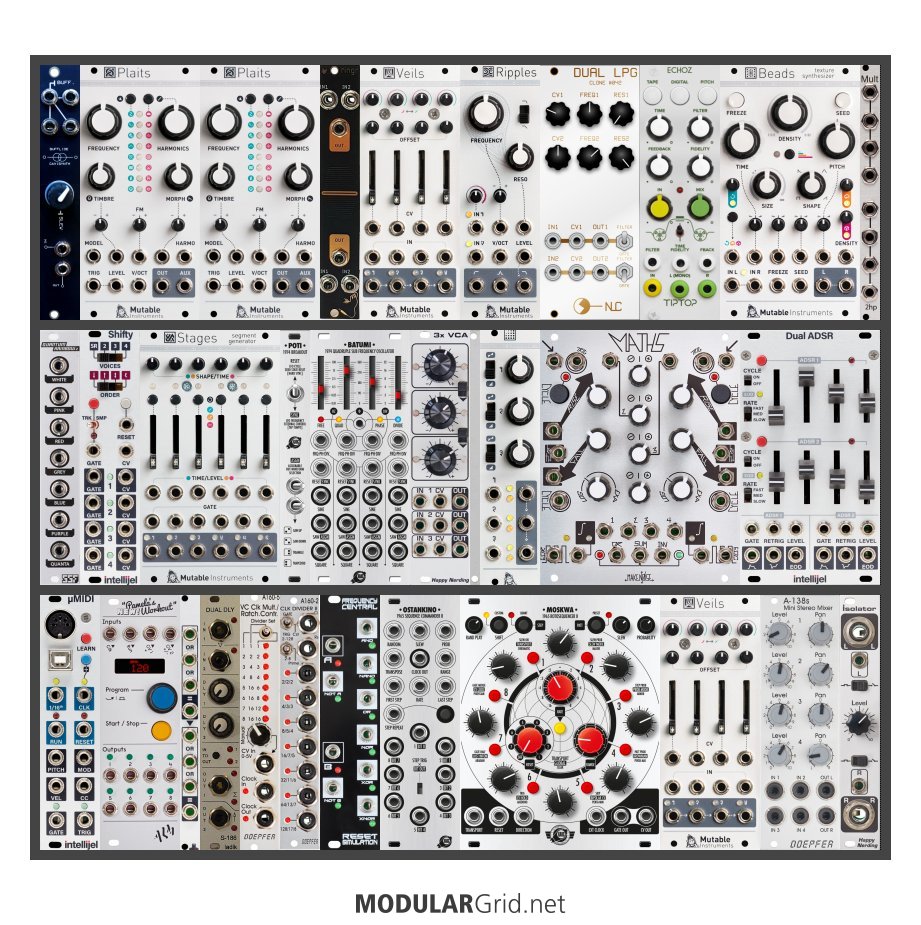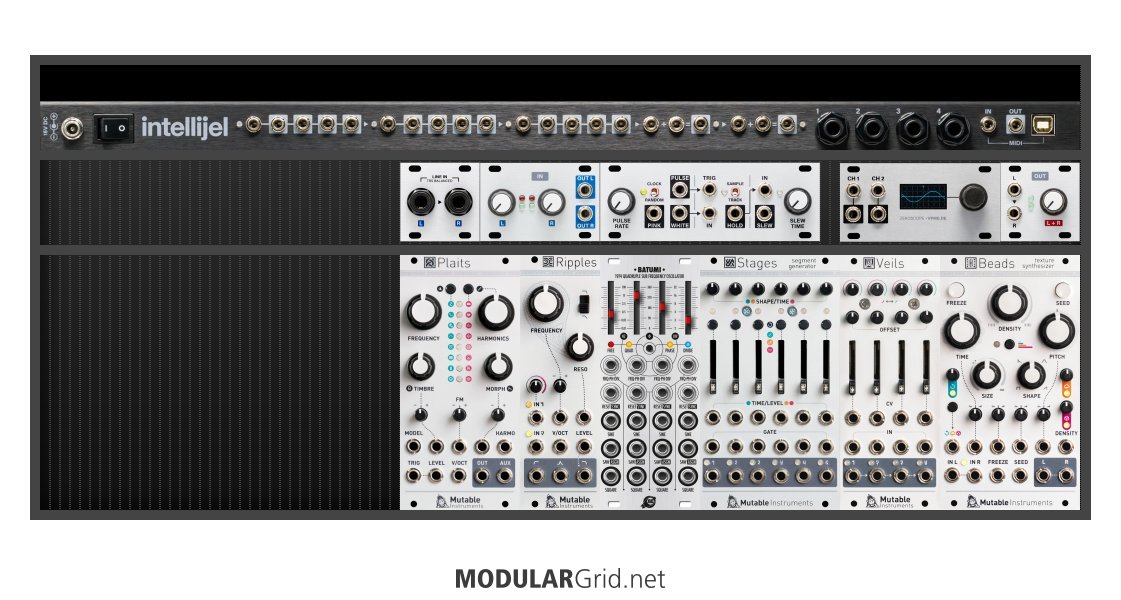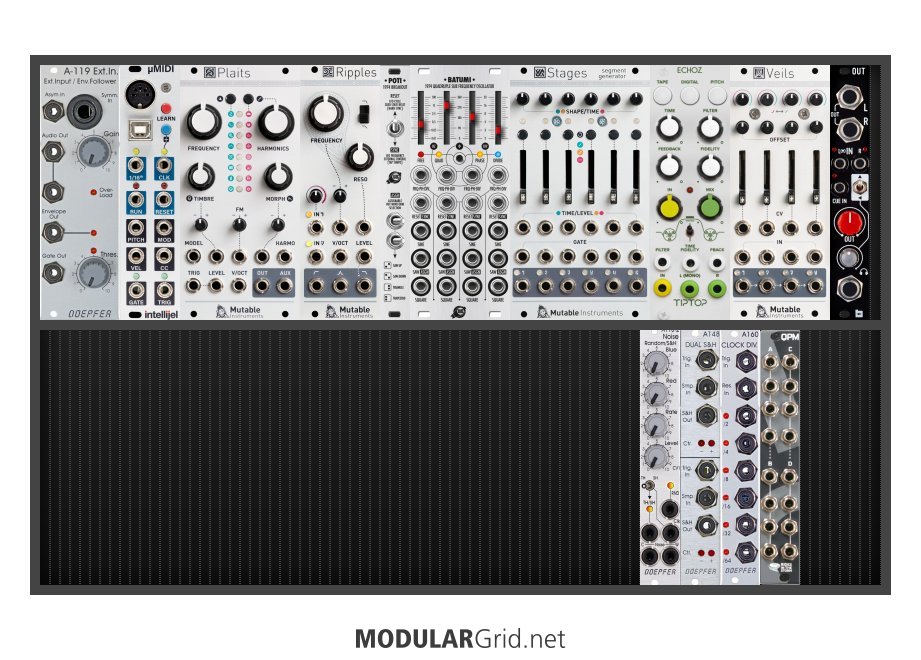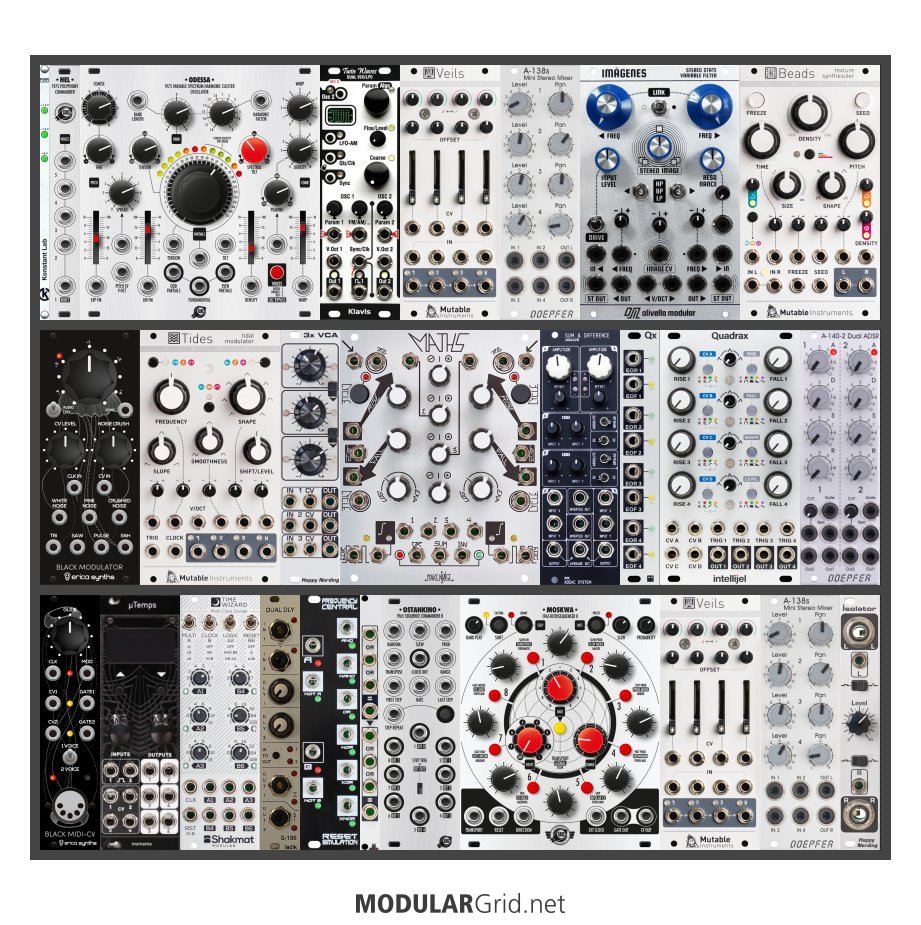Hmmm...well, let's see. As someone who went through the academic music system (until I got to Illinois, which taught me a lot of "interesting lessons" about academic composition...to the point that I quit academia altogether), the idea here to create a "teaching synth" is good...but you have to impose certain limits on the build so that you don't have a lot of confusing gewgaws in there that no one will likely encounter in the real world. As for me, I learned on an ARP 2600, which I STILL say is perhaps the sine qua non of educational synths. Given that I've found that there's little to no significant differences between any of the Rev. 2, 3 or 4 2600s and the Behringer 2600, having one of those around is something I would strongly suggest. You can also mount it in a heavy rack, which discourages it from "going walkies". The Palette 104, on the other hand, is EMINENTLY stealable...it has no Kensington lock port, it's small enough to fit in a backpack or under a coat, and its Meanwell brick is even more stealable; if someone needed a brick for their own rig, there'll be a temptation to snarf that supply. Also, the tile row is still a bit of an "unusual" feature that's still not 100% in common use. So, I banged out something here...

The idea was to create a teaching synth, a system that's specifically designed to show what the basic functions of subtractive synthesis are and what they do...and also, to show what happens when you start interconnecting things and arrive at that "more than the sum of the parts" result.
So, this is set up so that all of the main aspects are amply demonstrated. The top row is all audio, middle is all modulation, and the bottom is all control. Here's what's here...
Top row: This starts with a Cavisynth module, their Bufflide...this contains a 1-3 buffered mult AND a slew generator for portamento. Then there's TWO Plaits, because you want to show not only how these work, but what happens when you put two VCOs together and slightly detune one, or to show how you can tune one VCO to a fundamental and then use the second to add the harmonic content (very Plaits trick, that). After that, a dual ring modulator from Tenderfoot (basically, the same passive ringmod module I have hiding in two of my routing patchbays), then a Veils...which comes before the filters because you can show how to "strum" VCOs via modulation signals. Then Ripples, and a Nonlinearcircuits Dual LPG...because it's very useful to use a VCF for "broad" filtering and then use an LPG to contour that into individual notes, or to use the LPGs with some noise (see below) for percussives. Then the audio processing...a Tiptop Echoz provides delay methods, and then the Beads does its granular thing. Last thing there is an unbuffered mult; normally, I'd leave these out on a small build, but it's worth having it here to show how you use these.
Middle row: Quantum Rainbow 2 is a brilliant way to show what "noise color" is about, plus what you can do with the different noise weightings. The Shifty functions both as a sample-and-hold (in single mode) or an analog shift register so that you can "carry over" CV values based on timing and get quasi-polyphony. Stages is next (very useful pairing with the Shifty, also) then the Batumi + the Poti expander. After that is a Happy Nerding 3xVCA, which gives you three linear VCAs for altering modulation signals, then a Shades for polarization, mixing, adding offsets, etc. And Maths. Yeah, you said "no Make Noise", but...well, Maths is what it IS. Not only is it popular in Eurorack, but I think Tony's redesign of the Serge DUSG is a staple in synthesis in general these days, and therefore, it should be in this instructional build. And after it, you'll find an Intellijel Dual ADSR because, while you can get other envelope behavior out of the Maths and Stages, it'll be important to have proper 4-stage EGs in here for both musical and instructional purposes.
Bottom row: An Intellijel uMIDI gives basic MIDI control over a single voice PLUS clocking and other MIDI CC value outputs. Then, yep, Pam's...not only as a clock, but also as a pattern generator and a few other things. Then the next several modules are for screwing around with what Pam's is doing: an Intellijel Diode-OR allows combining of pulse signals, a Ladik Dual Delay gives you two channels of clock pulse delay, then two Doepfer clock mods give you various clock division schemes or multiplication/ratcheting, depending on which module you're talking about. Then Frequency Central's Reset Simulation is a brilliant Boolean logic implementation that not only shows what Boolean gates can do with timing, but gives graphic examples of what the Boolean states actually look like. And of course, if there's a Boolean module, there's a sequencer...and I went with Xaoc's Moskwa 2 and their Ostankino 2 sequencer control module for a robust but simple sequencing environment. After that is your output modules: another Veils for VCA control over audio levels, then this feeds a Doepfer A-138s to allow stereo panning and manual level control. And at the very end, the Happy Nerding Isolator not only gives you output isolation and a ganged stereo level, but it also contains transformers for the isolation function...which you can "punch" a little to warm up a signal, a very worthwhile little trick that should be taught.
The basic idea here was to use as many "big name" manufacturers as possible...not because I'm down on boutique builders, but because I wanted to make this as "bog-standard" as possible, so that anything learned on this will translate decently to systems built around more esoteric modules. So the only "might be difficult to get" module here is actually that Cavisynth Bufflide...which, if that proves to be the case, can be fixed by using a Ladik C-015 in place of the Bufflide and then you'll move the passive mult at the right end to the left end and switch it out for a 2 hp buffered mult. Otherwise, much of this is either fairly close to "off the shelf" or, such as in the case of Ladik, it's from long-running, experienced smaller makers. Annoyingly, this build wasn't "cheap" as such (it sort of is for Eurorack in general, though), but it should be simple enough to implement if the funding is there, and it should be a worthwhile educational synth for many years to come.
Now...about that case. Yeah, three rows...at 84 hp. Basically, this is designed to go in a Doepfer LC9 case (which is only a whopping $36 more than the Palette 104). And the rationale there is that the LC9 cab is a big ol' chunk of MDF wood...into which you can drill a hole, attach a large eyebolt, and then padlock a chain onto that, assuring that this synth ain't goin' NO WHERE without that key. Knowing how equipment in academic situations can mysteriously "grow legs,", I felt that this was extremely important to implement...and the "gravy" here is that the three-tier cab effectively shows the primary division between audio, modulation, and control sections of a basic 21st century modular rig. Should work if the $$$ can be made to work.




